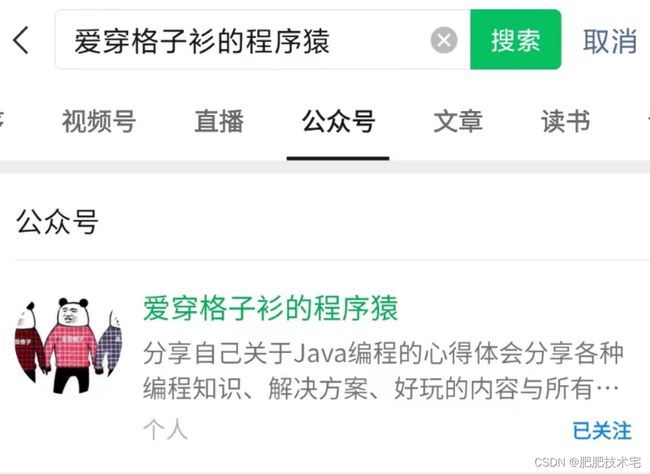SpringBoot:如何优雅地进行响应数据封装、异常处理?
背景
越来越多的项目开始基于前后端分离的模式进行开发,这对后端接口的报文格式便有了一定的要求。通常,我们会采用JSON格式作为前后端交换数据格式,从而减少沟通成本等。
这篇文章,就带大家了解一下基于SpringBoot框架来封装返回报文以及统一异常处理。
报文基本格式
一般报文格式通常会包含状态码、状态描述(或错误提示信息)、业务数据等信息。在此基础上,不同的架构师、项目搭建者可能会有所调整。但从整体上来说,基本上都是大同小异。
在SpringBoot项目中,通常接口返回的报文中至少包含三个属性:
- code:请求接口的返回码,成功或者异常等返回编码,例如定义请求成功。
- message:请求接口的描述,也就是对返回编码的描述。
- data:请求接口成功,返回的业务数据。
示例报文如下:
{
"code":200,
"message":"SUCCESS",
"data":{
"info":"测试成功"
}
}
复制代码在上述报文格式中,不同的设计者是会有一些分歧的,特别是code值的定义。如果完全基于RESTful API设计的话,code字段可能就不需要存在了,而是通过HTTP协议中提供的GET、POST、PUT、DELETE操作等来完成资源的访问。
但在实践中,不论是出于目前国内大多数程序员的习惯,还是受限于HTTP协议提供的操作方法的局限性,很少完全遵照RESTful API方式进行设计。通常都是通过自定义Code值的形式来赋予它业务意义或业务错误编码。
虽然可以不用完全遵守RESTful API风格来定义Code,在Code值的自定义中,也存在两种形式:遵循HTTP状态码和自主定义。
像上面的示例,用200表示返回成功,这就是遵循HTTP响应状态码的形式来返回,比如还有其他的400、401、404、500等。当然,还有完全自主定义的,比如用0表示成功,1表示失败,然后再跟进通用编码、业务分类编码等进行定义。
在此,笔者暂不评论每种形式的好坏,只列举了常规的几种形式,大家了解对应的情况,做到心中有数,有所选择即可。
响应参数封装实践
创建一个SpringBoot项目,并引入Lombok依赖(精简代码),对应的核心依赖如下:
org.springframework.boot
spring-boot-starter-web
org.projectlombok
lombok
复制代码创建枚举类,用于定义返回的错误码:
@Getter
@AllArgsConstructor
public enum ResponseCodeEnums {
SUCCESS(200, "success"),
FAIL(500, "failed"),
HTTP_STATUS_200(200, "ok"),
HTTP_STATUS_400(400, "request error"),
HTTP_STATUS_401(401, "no authentication"),
HTTP_STATUS_403(403, "no authorities"),
HTTP_STATUS_500(500, "server error");
private final int code;
private final String message;
}
复制代码这里只定义了一些通用的、基于的HTTP响应状态码,业务相关的编码可根据业务需求进行定义。
定义统一返回结果实体类:
@Data
public class ResponseInfo {
/**
* 状态码
*/
protected int code;
/**
* 响应信息
*/
protected String message;
/**
* 返回数据
*/
private T data;
public static ResponseInfo success() {
return new ResponseInfo<>();
}
public static ResponseInfo success(T data) {
return new ResponseInfo<>(data);
}
public static ResponseInfo fail(String message) {
return new ResponseInfo<>(ResponseCodeEnums.FAIL.getCode(), message);
}
public ResponseInfo() {
this.code = ResponseCodeEnums.SUCCESS.getCode();
this.message = ResponseCodeEnums.SUCCESS.getMessage();
}
public ResponseInfo(ResponseCodeEnums statusEnums) {
this.code = statusEnums.getCode();
this.message = statusEnums.getMessage();
}
/**
* 若没有数据返回,可以人为指定状态码和提示信息
*/
public ResponseInfo(int code, String msg) {
this.code = code;
this.message = msg;
}
/**
* 有数据返回时,状态码为200,默认提示信息为“操作成功!”
*/
public ResponseInfo(T data) {
this.data = data;
this.code = ResponseCodeEnums.SUCCESS.getCode();
this.message = ResponseCodeEnums.SUCCESS.getMessage();
}
/**
* 有数据返回,状态码为 200,人为指定提示信息
*/
public ResponseInfo(T data, String msg) {
this.data = data;
this.code = ResponseCodeEnums.SUCCESS.getCode();
this.message = msg;
}
}
复制代码 在ResponseInfo中运用了泛型和公共方法、构造方法的封装,方便在业务中使用。示例中只提供了部分方法的封装,根据自身业务场景和需要可进一步封装。
统一报文封装在接口中的使用:
@Slf4j
@RestController
public class TestController {
@RequestMapping("/calc")
public ResponseInfo calc(Integer id) {
try {
// 模拟异常业务代码
int num = 1 / id;
log.info("计算结果num={}", num);
return ResponseInfo.success();
} catch (Exception e) {
return ResponseInfo.fail("系统异常,请联系管理员!");
}
}
}
复制代码 在浏览器中访问:http://localhost:8080/calc,返回结果如下:
{
"code": 500,
"message": "系统异常,请联系管理员!",
"data": null
}
复制代码这是因为没传递id参数,导致业务抛异常,走异常报文返回。
在浏览器中访问:http://localhost:8080/calc?id=1,返回结果如下:
{
"code": 200,
"message": "success",
"data": null
}
复制代码正常返回结果。
统一异常处理
在上述实例中,我们通过try...catch的形式捕获异常,并进行处理。在SpringBoot中,我们可以通过RestControllerAdvice注解来定义全局异常处理,这样就无需每处都try...catch了。
@Slf4j
@RestControllerAdvice
public class ExceptionHandlerAdvice {
/**
* 参数格式异常处理
*/
@ExceptionHandler({IllegalArgumentException.class})
@ResponseStatus(HttpStatus.BAD_REQUEST)
public ResponseInfo badRequestException(IllegalArgumentException ex) {
log.error("参数格式不合法:{}", ex.getMessage());
return new ResponseInfo<>(HttpStatus.BAD_REQUEST.value() + "", "参数格式不符!");
}
/**
* 权限不足异常处理
*/
@ExceptionHandler({AccessDeniedException.class})
@ResponseStatus(HttpStatus.FORBIDDEN)
public ResponseInfo badRequestException(AccessDeniedException ex) {
return new ResponseInfo<>(HttpStatus.FORBIDDEN.value() + "", ex.getMessage());
}
/**
* 参数缺失异常处理
*/
@ExceptionHandler({MissingServletRequestParameterException.class})
@ResponseStatus(HttpStatus.BAD_REQUEST)
public ResponseInfo badRequestException(Exception ex) {
return new ResponseInfo<>(HttpStatus.BAD_REQUEST.value() + "", "缺少必填参数!");
}
/**
* 空指针异常
*/
@ExceptionHandler(NullPointerException.class)
@ResponseStatus(value = HttpStatus.INTERNAL_SERVER_ERROR)
public ResponseInfo handleTypeMismatchException(NullPointerException ex) {
log.error("空指针异常,{}", ex.getMessage());
return ResponseInfo.fail("空指针异常");
}
@ExceptionHandler(Exception.class)
@ResponseStatus(value = HttpStatus.INTERNAL_SERVER_ERROR)
public ResponseInfo handleUnexpectedServer(Exception ex) {
log.error("系统异常:", ex);
return ResponseInfo.fail("系统发生异常,请联系管理员");
}
/**
* 系统异常处理
*/
@ExceptionHandler(Throwable.class)
@ResponseStatus(HttpStatus.INTERNAL_SERVER_ERROR)
public ResponseInfo exception(Throwable throwable) {
log.error("系统异常", throwable);
return new ResponseInfo<>(HttpStatus.INTERNAL_SERVER_ERROR.value() + "系统异常,请联系管理员!");
}
}
复制代码 在上述方法中,对一些常见的异常进行了统一处理。通常情况下,根据业务需要还会定义业务异常,并对业务异常进行处理,大家可以根据自己项目中异常的使用情况进行拓展。
关于@RestControllerAdvice的几点说明:
- @RestControllerAdvice注解包含了@Component注解,会把被注解的类作为组件交给Spring来管理。
- @RestControllerAdvice注解包含了@ResponseBody注解,异常处理完之后给调用方输出一个JSON格式的封装数据。
- @RestControllerAdvice注解有一个basePackages属性,该属性用来拦截哪个包中的异常信息,一般不指定,拦截项目工程中的所有异常。
- 在方法上通过@ExceptionHandler注解来指定具体的异常,在方法中处理该异常信息,最后将结果通过统一的JSON结构体返回给调用者。
重新定义一个接口:
@RequestMapping("/calc1")
public ResponseInfo calc1(Integer id) {
// 模拟异常业务代码
int num = 1 / id;
log.info("计算结果num={}", num);
return ResponseInfo.success();
}
复制代码 在请求的时候,不传递id值,即在浏览器中访问:
{
"code": 500,
"message": "空指针异常",
"data": null
}
复制代码可以看到统一异常处理对空指针异常进行了拦截处理,并返回了ExceptionHandlerAdvice中定义的统一报文格式。
小结
在使用SpringBoot或其他项目中,统一的报文格式和统一的异常处理都是必须的。本篇文章介绍了基于SpringBoot的实现,如果你的项目中采用了其他的技术栈,则可考虑对应的处理方式。同时,日常中很多类似的功能都可以统一进行处理,避免大量无效的硬编码。
